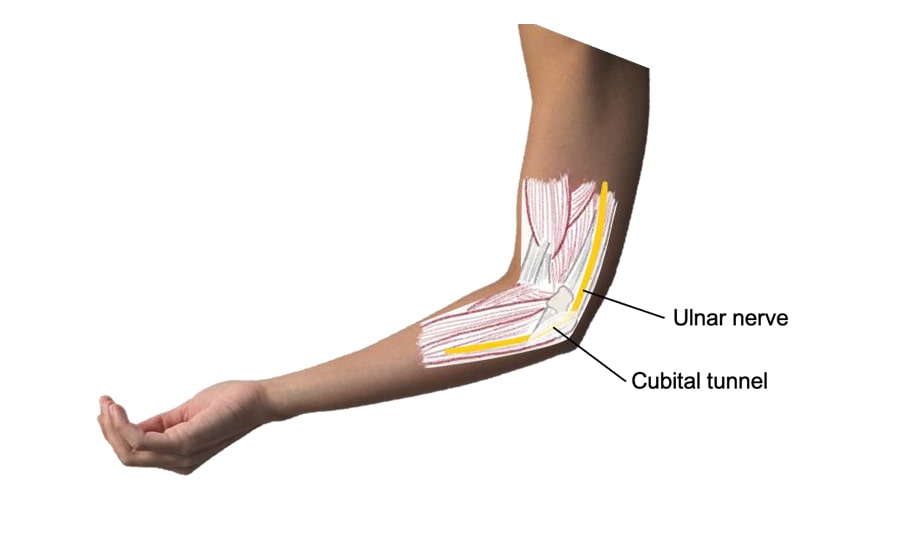Download PDF (900 kb, PDF)
What is Cubital Tunnel Syndrome?
The cubital tunnel is an area on the inner elbow where the ulnar nerve passes. The ulnar nerve provides sensation to the ring and little fingers and coordinates fine motor control in the hand.

Cubital tunnel syndrome occurs when the ulnar nerve is compressed as it passes through the cubital tunnel, leading to numbness and tingling in the ring and little finger and possibly finger weakness.
This compression may be caused by bone spurs, lumps, tight fascial bands (connective tissues), tight muscle fibres, or aberrant muscles.
Risk Factors
- Previous injuries around the elbow resulting in deformity
- Elbow lumps
- Occupational or lifestyle factors where there is repetitive elbow flexion or prolonged pressure on the elbows
Symptoms
-
Early Stage: Tingling or numbness in the ring and little fingers - this may vary in severity.
-
Later Stage: Muscle weakness and wasting. The ring and little fingers may take on a claw posture, and pinch and grasp movements may be affected.
Diagnosis
-
Based on physical examination: sensory loss and weakness in the territory of the ulnar nerve and positive provocative testing.
-
Electrodiagnostic studies (Nerve Conduction Study (NCS) and Electromyography (EMG)) can help to confirm the diagnosis.
- Additional tests such as elbow X-rays or nerve ultrasound may be ordered if relevant.
Treatment
For patients with mild symptoms, wearing a padded elbow brace may suffice.
Therapeutic nerve gliding exercises and lifestyle modifications such as avoidance of prolonged pressure on flexed elbows may help improve symptoms.
FIf there are persistent symptoms, surgery may be recommended.
Surgical risks include wound infection, injury to the surrounding structures such as nerves and vessels, bruising, chronic pain, persistent ulnar nerve compressive symptoms and symptomatic subluxation of the ulnar nerve.
After surgery, the tingling sensation is expected to resolve, but numbness and weakness may persist.
